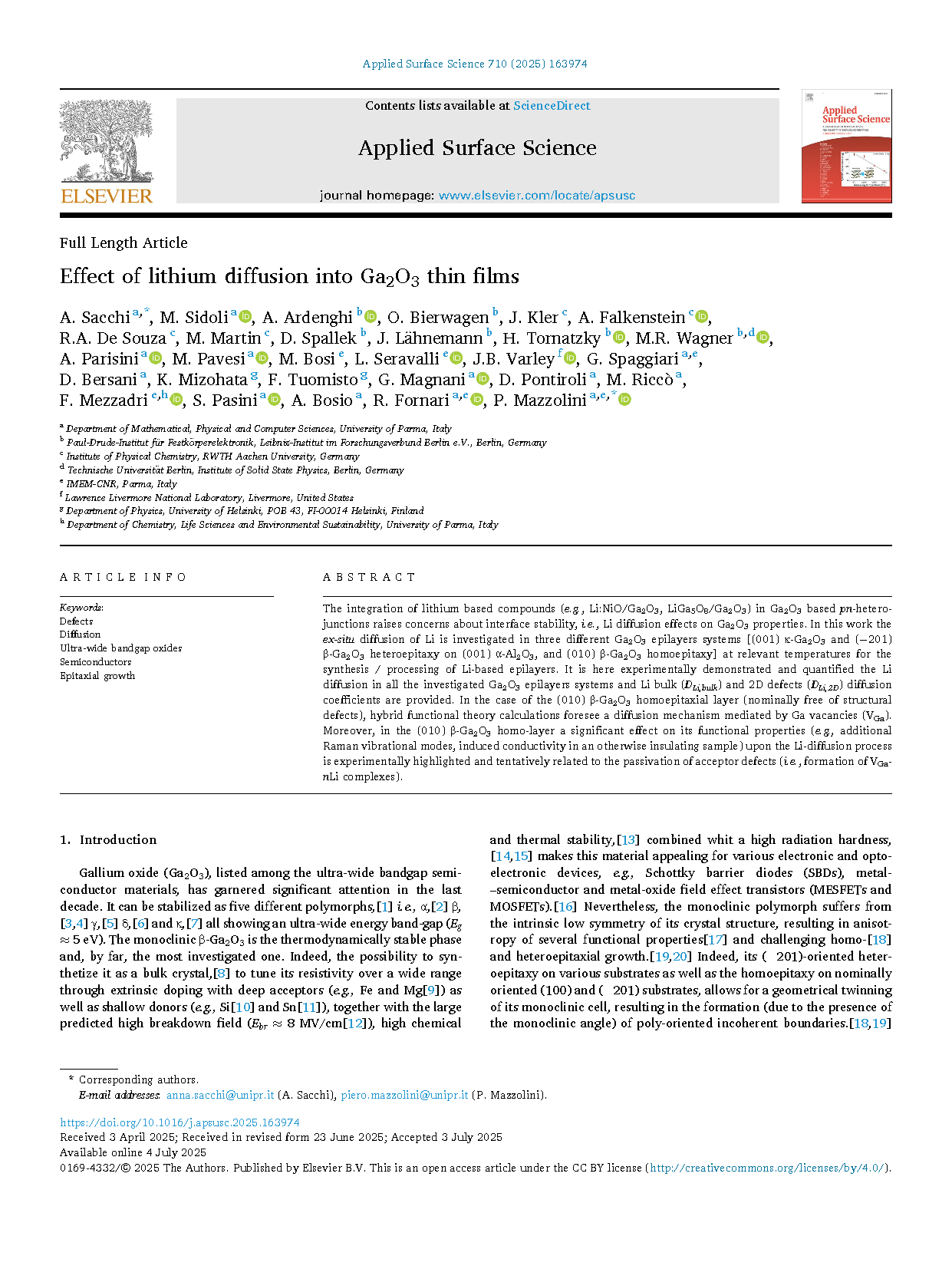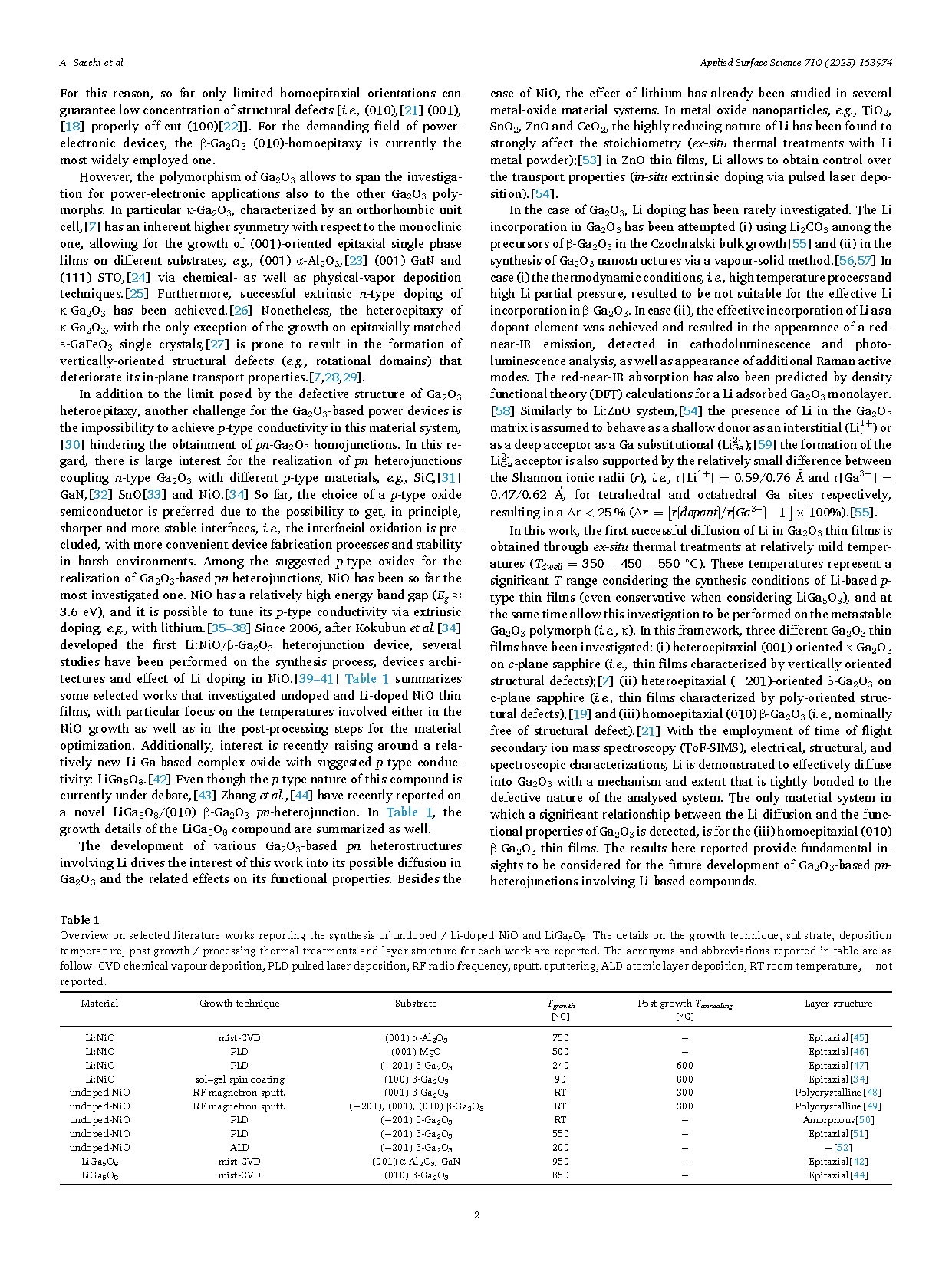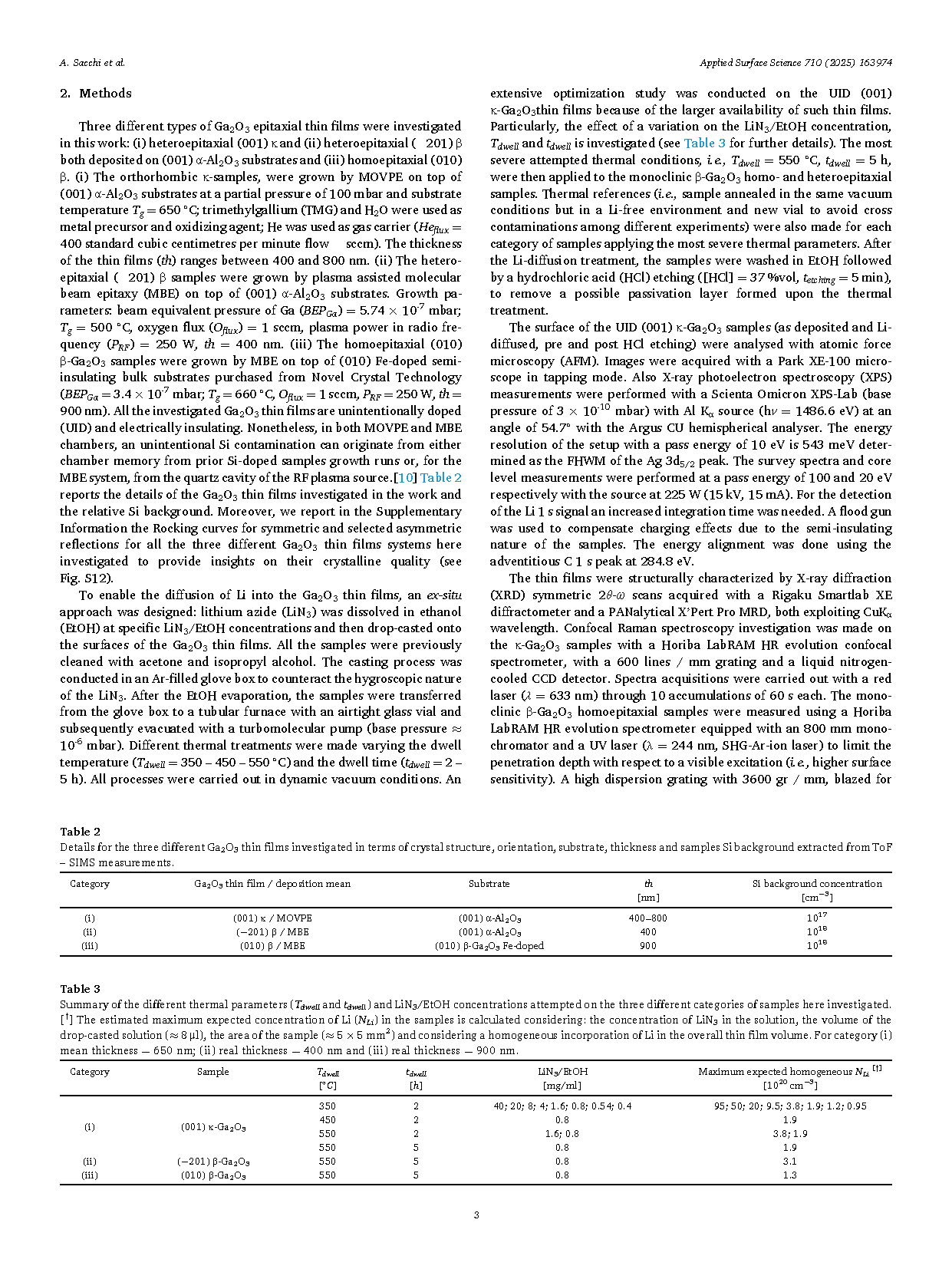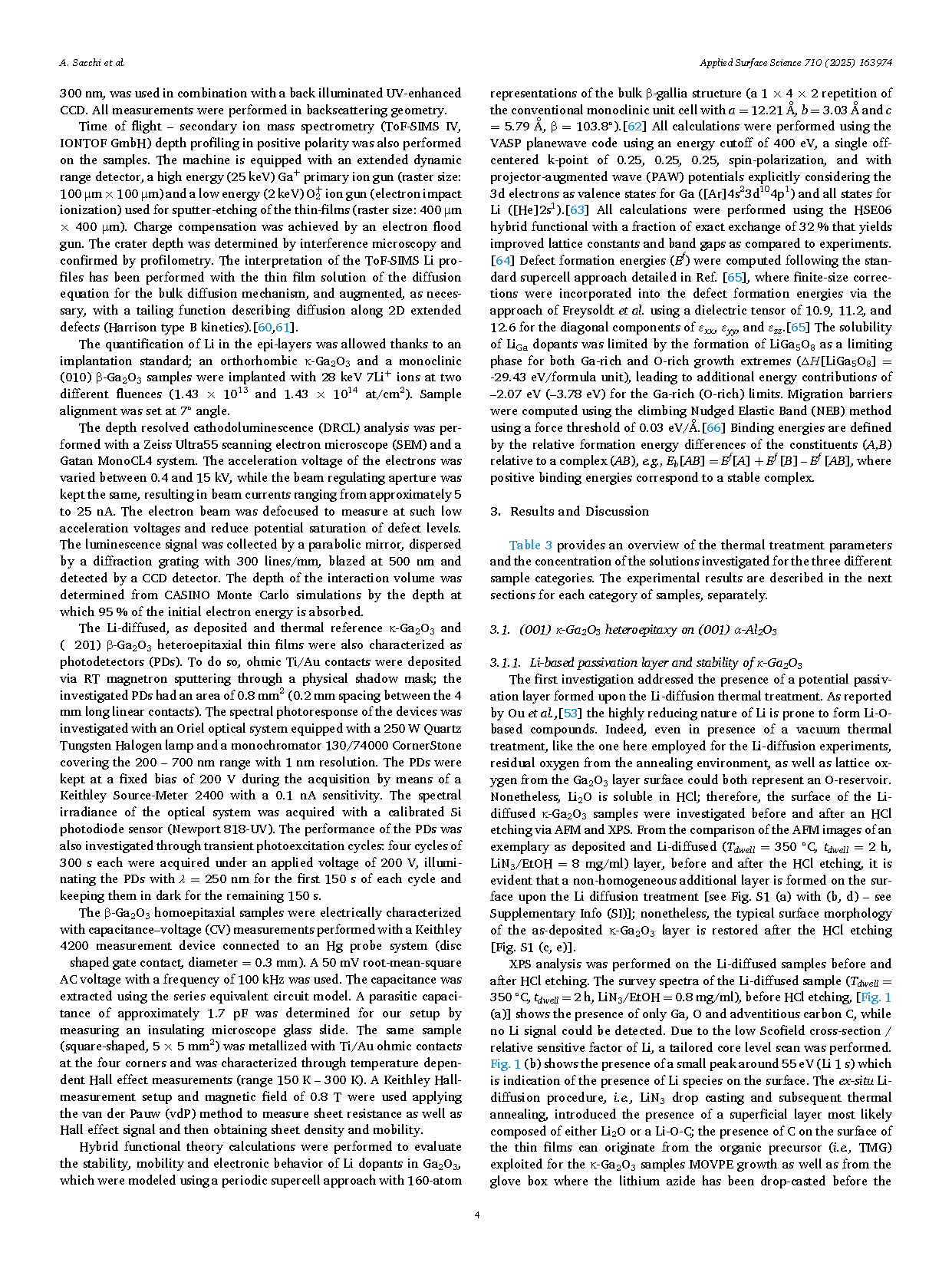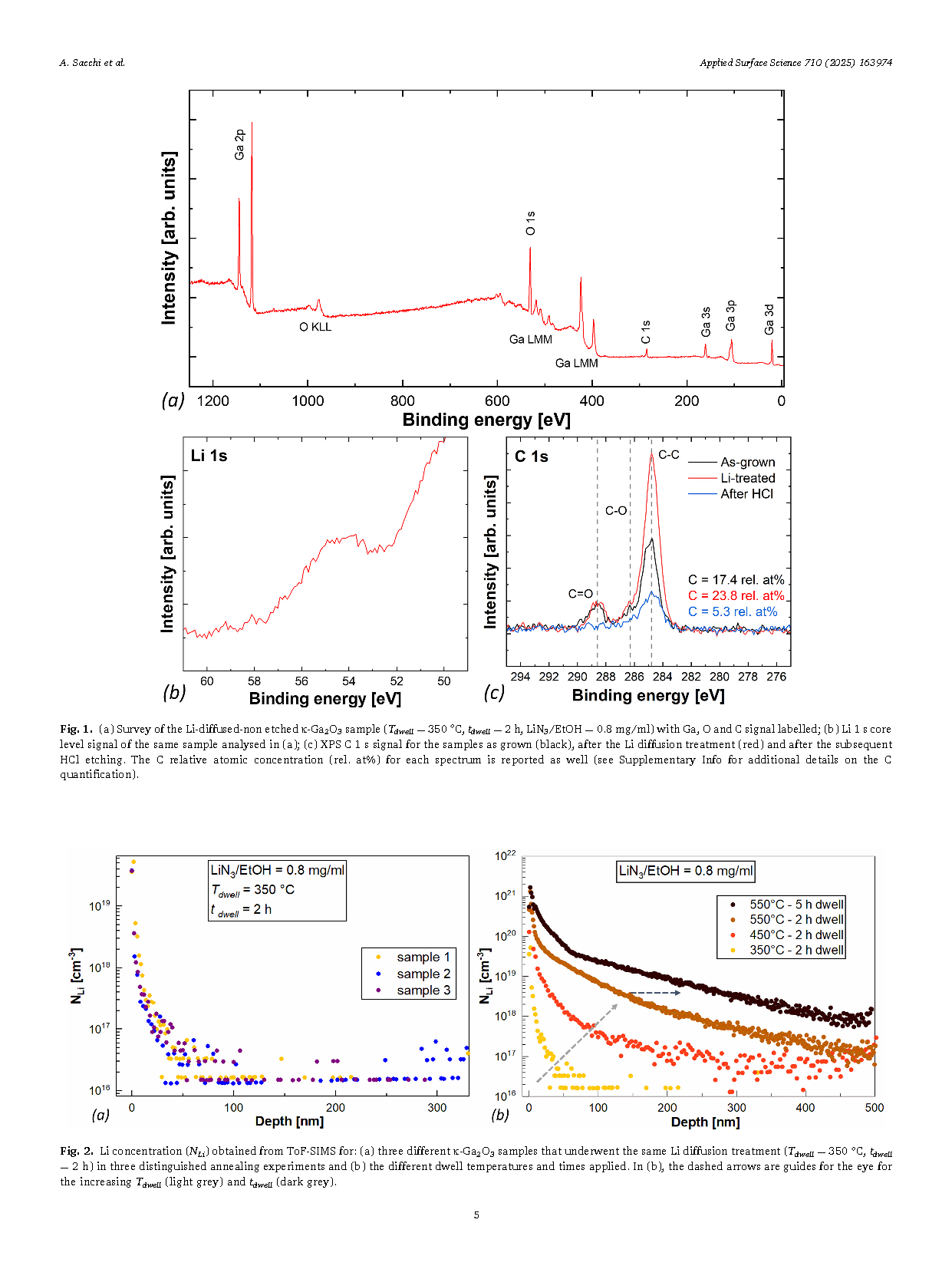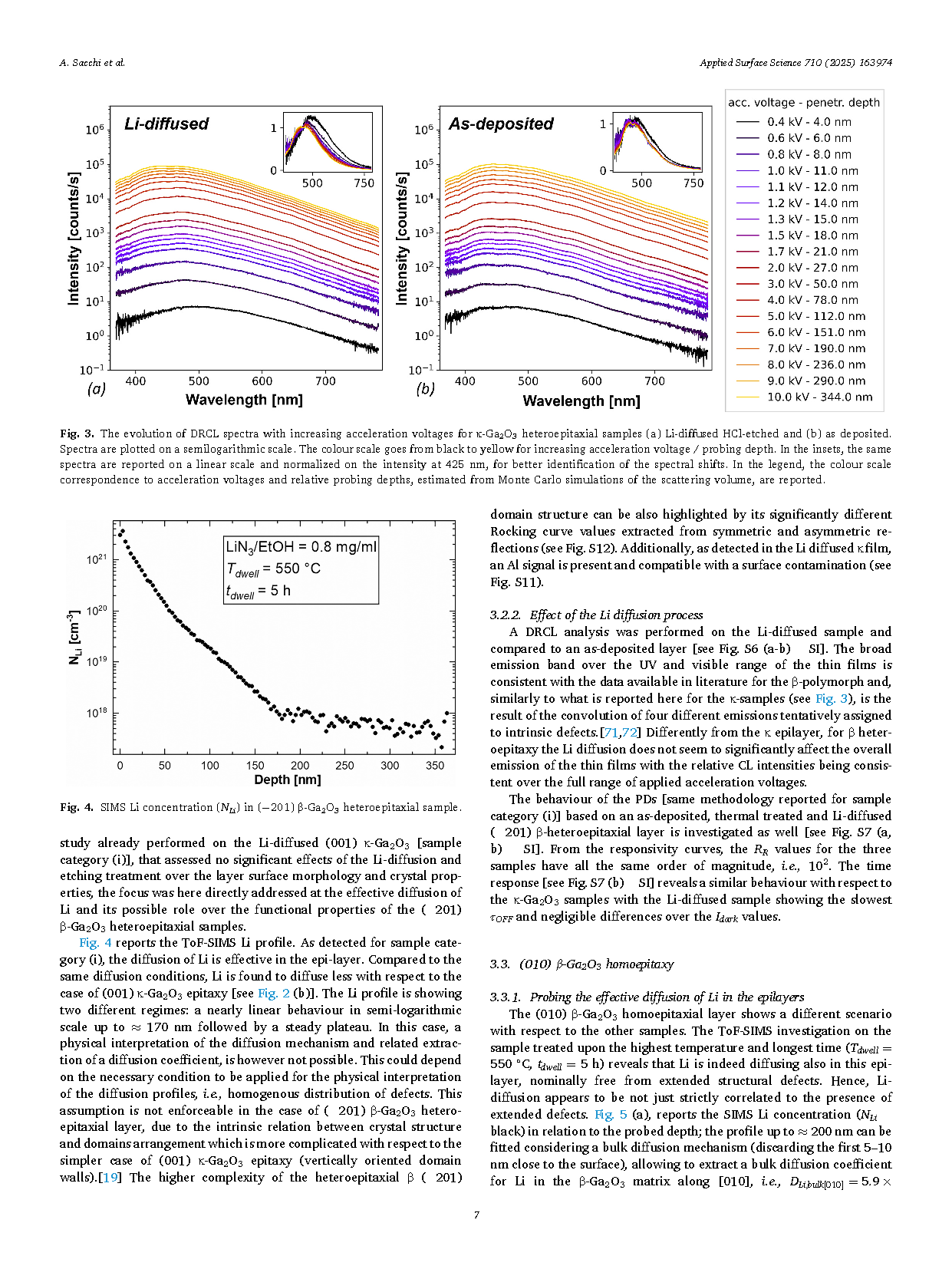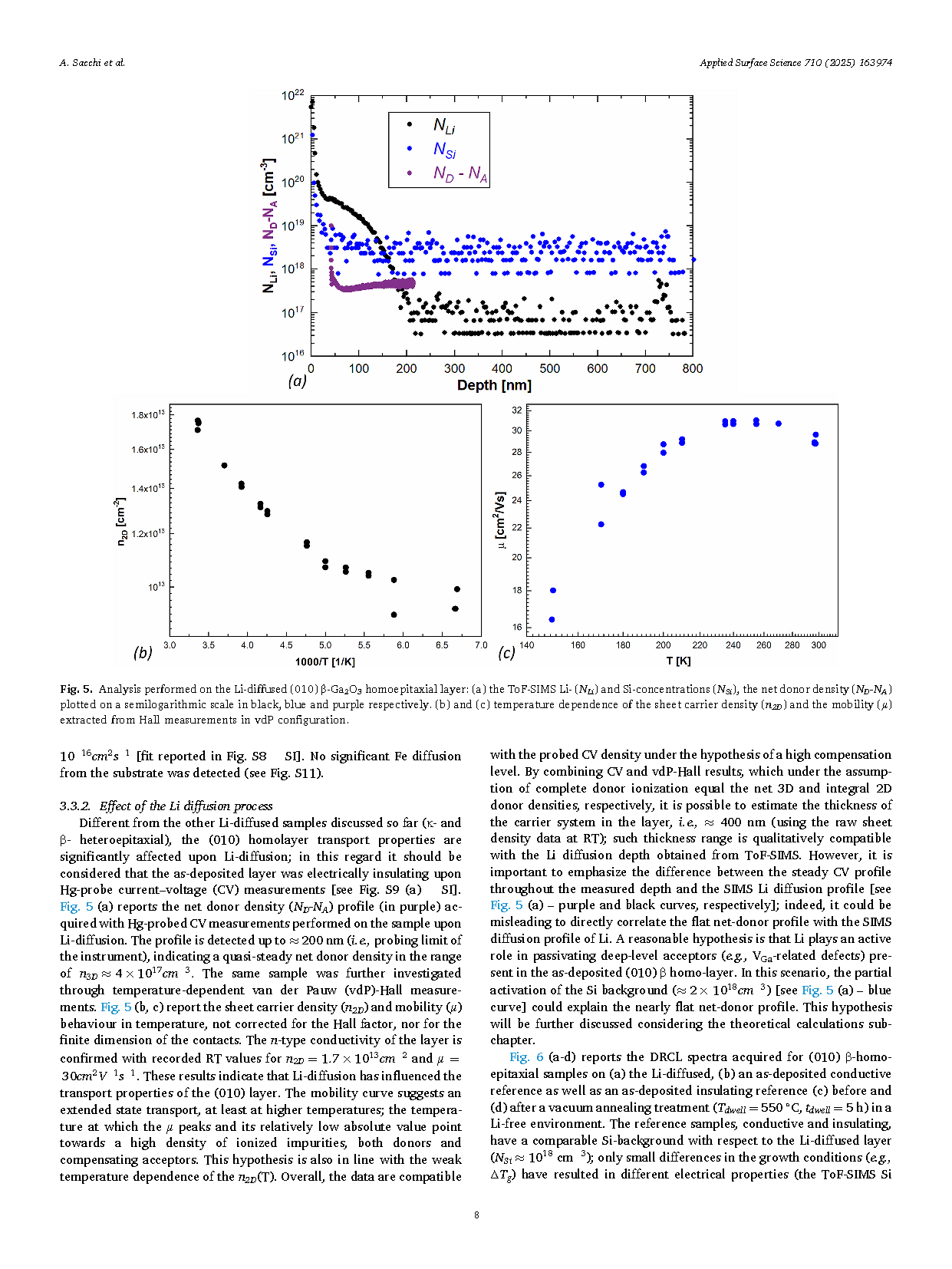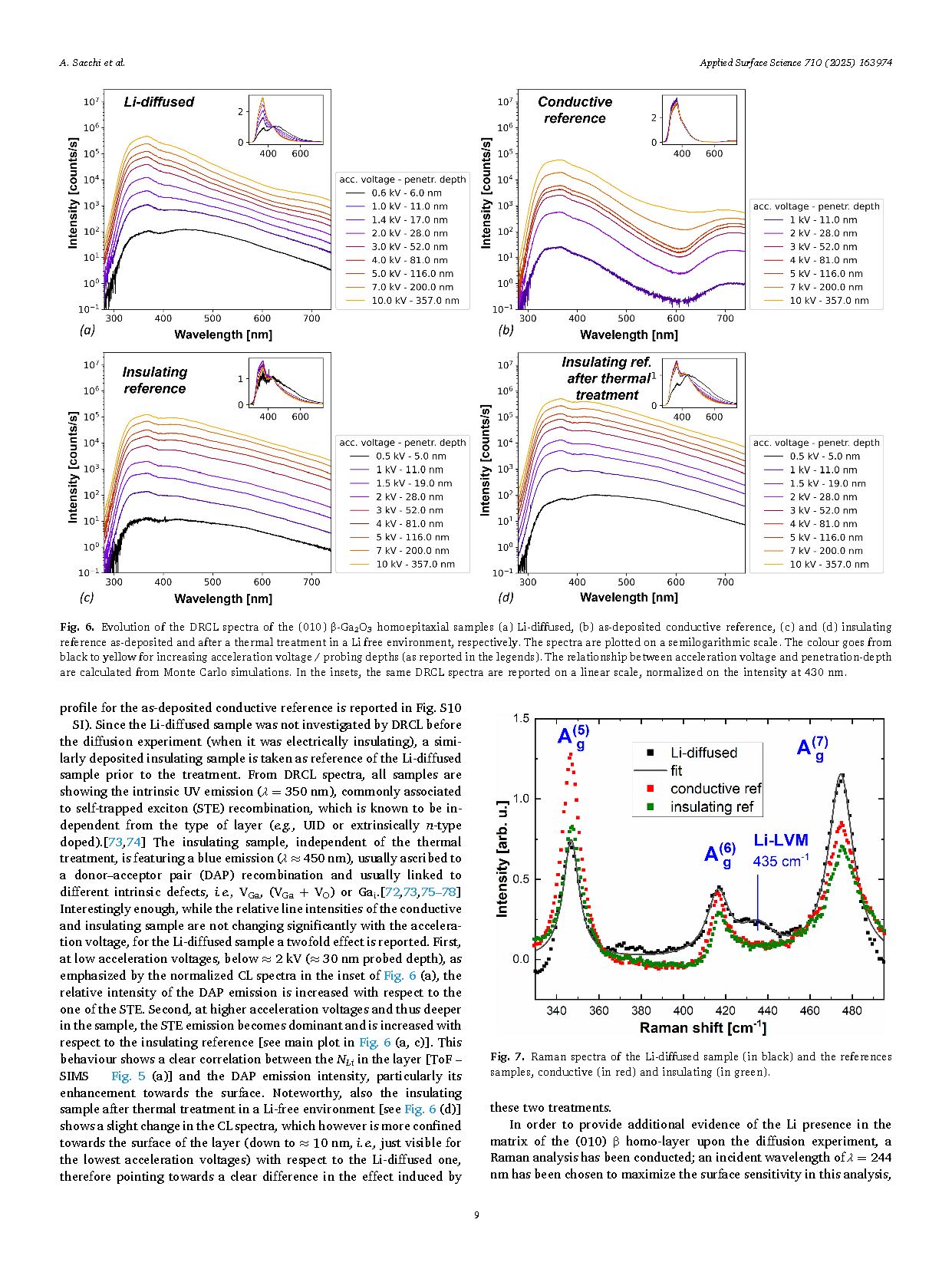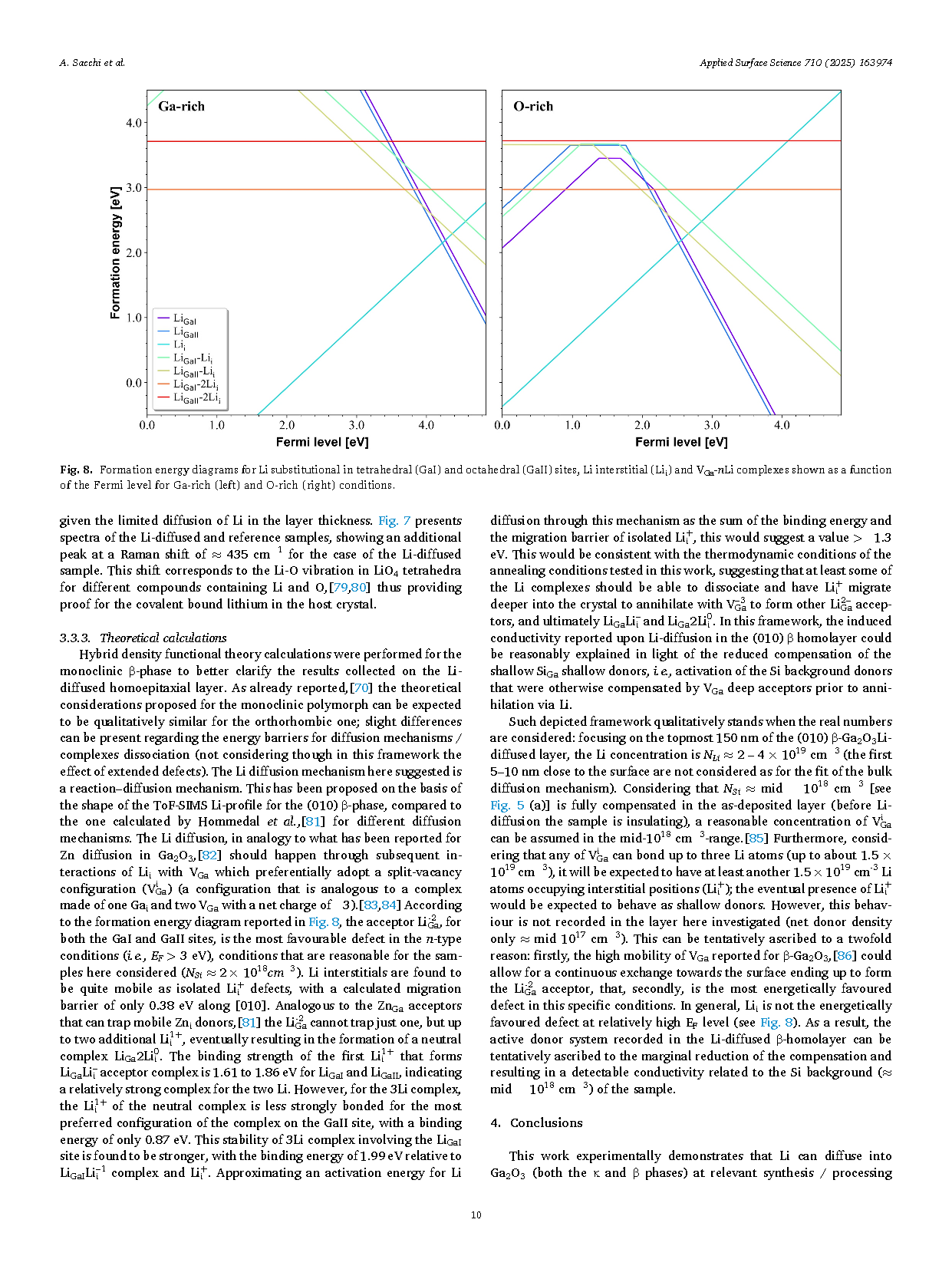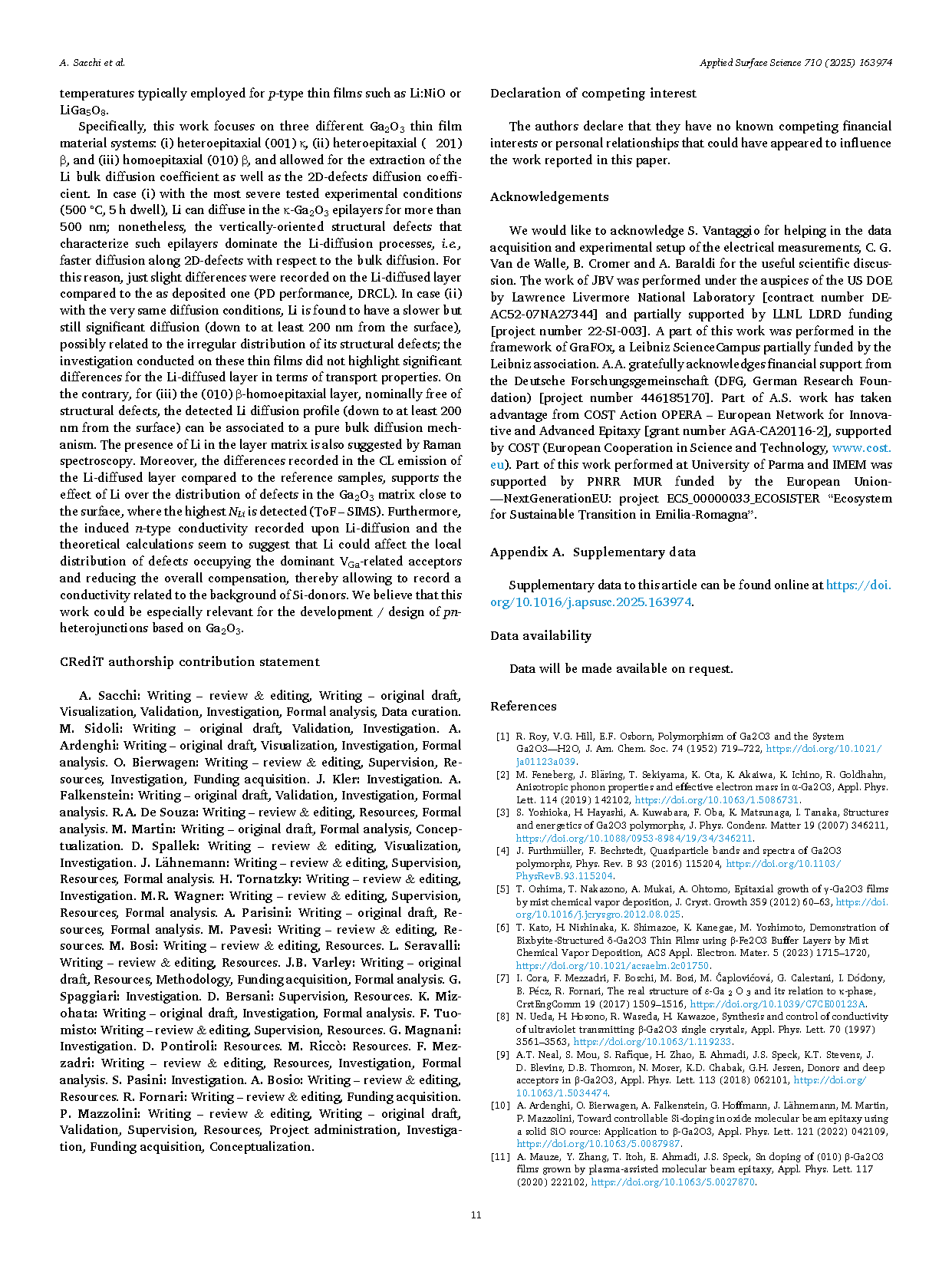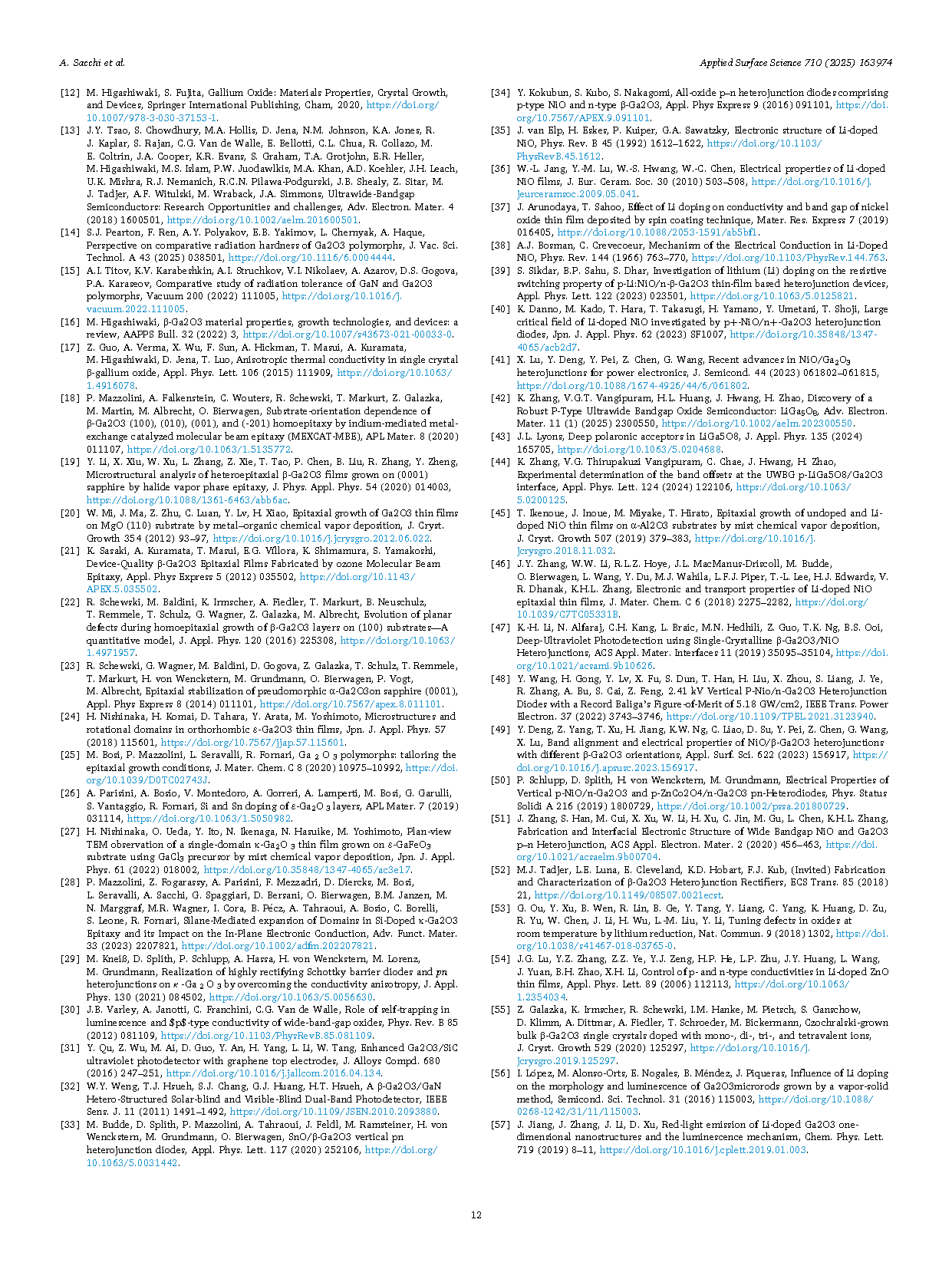
【International Papers】Effect of lithium diffusion into Ga₂O₃ thin films
日期:2025-08-08阅读:131
Researchers from the University of Parma have published a dissertation titled "Effect of lithium diffusion into Ga2O3 thin films" in Applied Surface Science.
Background
Gallium oxide (Ga2O3), listed among the ultra-wide bandgap semiconductor materials, has garnered significant attention in the last decade. It can be stabilized as five different polymorphs, i.e., α, β, γ, δ, and κ, all showing an ultra-wide energy band-gap (Eg ≈ 5 eV). The monoclinic β-Ga2O3 is the thermodynamically stable phase and, by far, the most investigated one. Indeed, the possibility to synthetize it as a bulk crystal, to tune its resistivity over a wide range through extrinsic doping with deep acceptor as well as shallow donors, together with the large predicted high breakdown field (Ebr ≈ 8 MV/cm), high chemical and thermal stability, combined whit a high radiation hardness, makes this material appealing for various electronic and optoelectronic devices, e.g., Schottky barrier diodes (SBDs), metal–semiconductor and metal-oxide field effect transistors (MESFETs and MOSFETs) Nevertheless, the monoclinic polymorph suffers from the intrinsic low symmetry of its crystal structure, resulting in anisotropy of several functional properties and challenging homo- and heteroepitaxial growth. Indeed, its (−201)-oriented heteroepitaxy on various substrates as well as the homoepitaxy on nominally oriented (100) and (−201) substrates, allows for a geometrical twinning of its monoclinic cell, resulting in the formation (due to the presence of the monoclinic angle) of poly-oriented incoherent boundaries. For this reason, so far only limited homoepitaxial orientations can guarantee low concentration of structural defects. For the demanding field of power-electronic devices, the β-Ga2O3 (010)-homoepitaxy is currently the most widely employed one.
Abstract
The integration of lithium based compounds (e.g., Li:NiO/Ga2O3, LiGa5O8/Ga2O3) in Ga2O3 based pn-heterojunctions raises concerns about interface stability, i.e., Li diffusion effects on Ga2O3 properties. In this work the ex-situ diffusion of Li is investigated in three different Ga2O3 epilayers systems [(001) κ-Ga2O3 and (−201) β-Ga2O3 heteroepitaxy on (001) α-Al2O3, and (010) β-Ga2O3 homoepitaxy] at relevant temperatures for the synthesis / processing of Li-based epilayers. It is here experimentally demonstrated and quantified the Li diffusion in all the investigated Ga2O3 epilayers systems and Li bulk (DLi,bulk) and 2D defects (DLi,2D) diffusion coefficients are provided. In the case of the (010) β-Ga2O3 homoepitaxial layer (nominally free of structural defects), hybrid functional theory calculations foresee a diffusion mechanism mediated by Ga vacancies (VGa). Moreover, in the (010) β-Ga2O3 homo-layer a significant effect on its functional properties (e.g., additional Raman vibrational modes, induced conductivity in an otherwise insulating sample) upon the Li-diffusion process is experimentally highlighted and tentatively related to the passivation of acceptor defects (i.e., formation of VGa-nLi complexes).
Highlights
● Demonstrated Li diffusion in Ga2O3 epilayers relevant for pn heterojunctions.
● Li-diffusion can induce a carrier system in otherwise insulating β-Ga2O3.
● Depth-dependent redistribution of deep level defects in Ga2O3 upon Li-diffusion.
● Additional Raman mode compatible with the presence of Li in the oxide matrix.
● Suggested Li diffusion mechanism in β-Ga2O3 through experiments and theory.

Fig. 1. (a) Survey of the Li-diffused-non etched κ-Ga2O3 sample (Tdwell = 350 °C, tdwell = 2 h, LiN3/EtOH = 0.8 mg/ml) with Ga, O and C signal labelled; (b) Li 1 s core level signal of the same sample analysed in (a); (c) XPS C 1 s signal for the samples as grown (black), after the Li diffusion treatment (red) and after the subsequent HCl etching. The C relative atomic concentration (rel. at%) for each spectrum is reported as well.

Fig. 2. Li concentration (NLi) obtained from ToF-SIMS for: (a) three different κ-Ga2O3 samples that underwent the same Li diffusion treatment (Tdwell = 350 °C, tdwell = 2 h) in three distinguished annealing experiments and (b) the different dwell temperatures and times applied. In (b), the dashed arrows are guides for the eye for the increasing Tdwell (light grey) and tdwell (dark grey).
DOI:
doi.org/10.1016/j.apsusc.2025.163974
